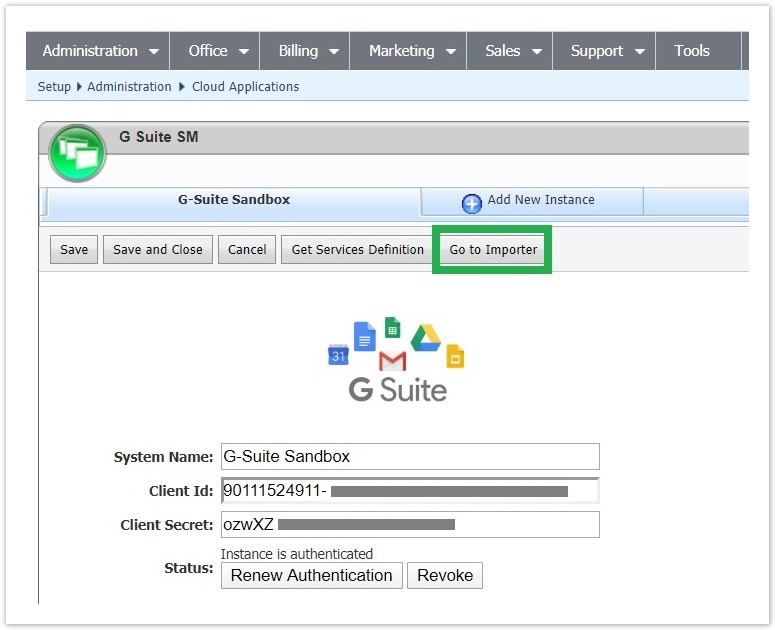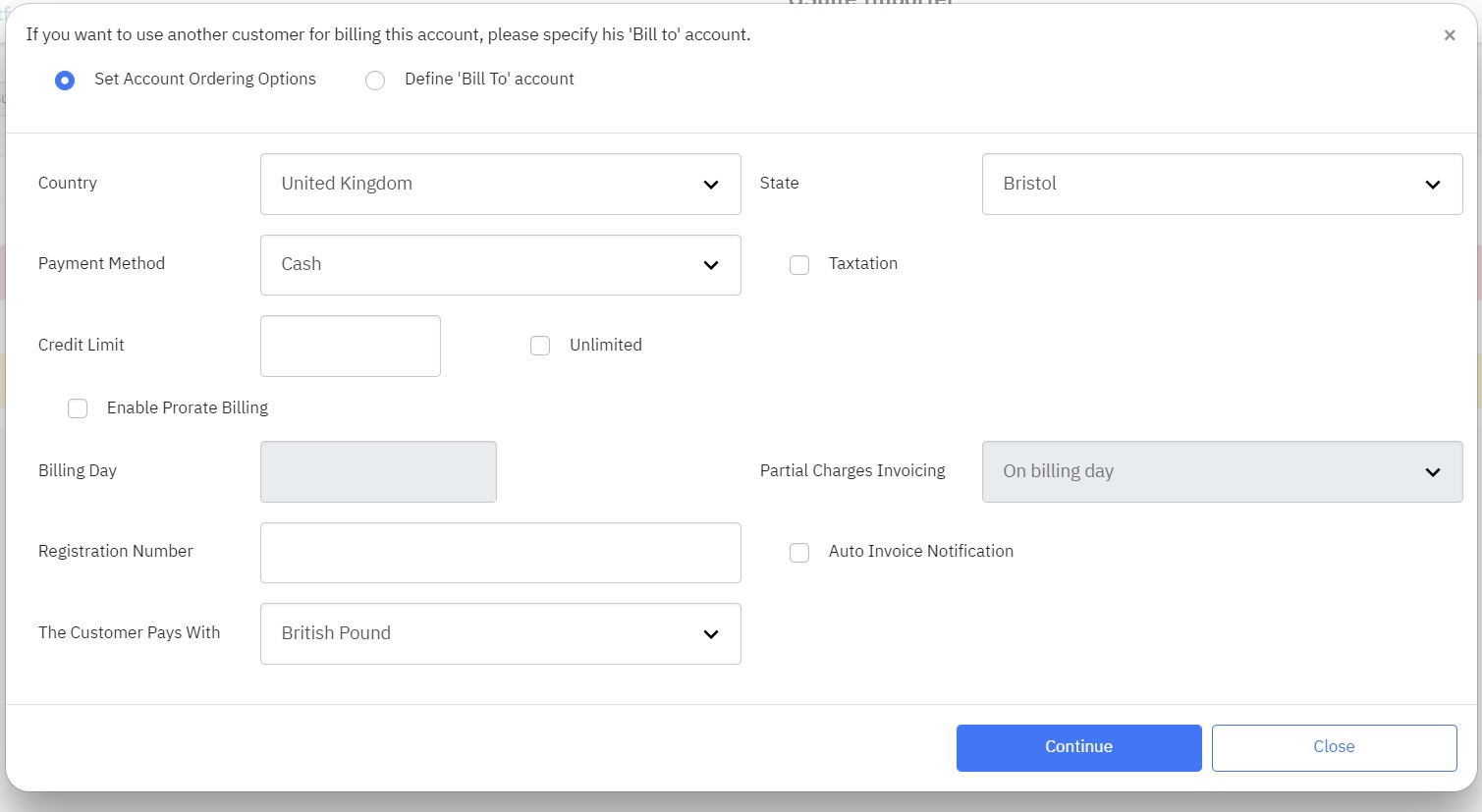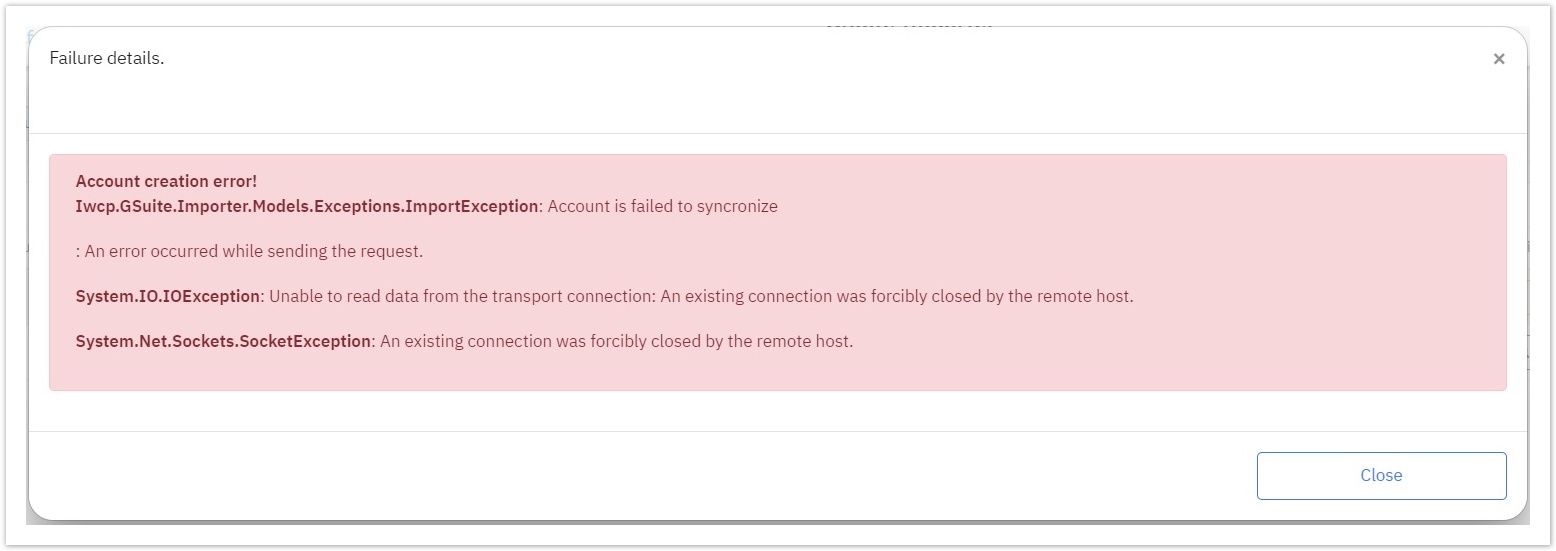Google Workspace Customers' Importer Tool
For migrating your existing customers and their subscriptions in your interworks.cloud BSS, we have implemented an import tool that is used for importing your Google Workspace customers in BSS. This is particularly handy during the initialization of the system.
Access the Tool
To access the Google Workspace Customers' Importer Tool, navigate to BSS Setup > Administration > System Options > Applications Setup > Google Workspace SM > Settings (button) and select the "Go To Importer" button.

Navigation & Tools
Inside the Google Workspace Importer tool, you are provided with the tools necessary to start immediately the import of your Google Workspace instance's customers. You are provided with a list(1), that will be populated with your customers' Google Workspace data, a drop-down menu(2) to filter the customers according to their import status and lastly, you are provided with two buttons; one for collecting(3) your Google Workspace customers' list under the importer's list and another one for the initialization of the import process(4).

Furthermore, you will find two main navigation tabs on the left-middle part of the screen (inside the collapsible menu), namely the "Current State" tab and the "Results" tab.
| Tab | Explanation |
|---|---|
| The first tab is where the import matching and initiation takes place for your Google Workspace customers towards our BSS. |
| The second tab is where you can examine the import results. |
In the following analysis, we shall examine first the Current State tab along with all its functionalities, and then the Results tab examination will follow.
Get/Update List
Inside the "Current State" tab you will find a matrix list with which you will manage your customer imports. Each time you wish to insert your Google Workspace customers to BSS, the tool acquires your existing customers and their corresponding subscriptions via the Get/Update List button, which essentially begins a "communication" (API call) with Google to collect everything relative to the instance that you are currently in. Then the results from this "communication" are depicted on the tool's list to be imported. Apart from customers, we will also depict their imported status as well as the status of their imported subscriptions.

Νext to the Get/Update List button, there is an indicator named "Last Update:" in which the date and time are displayed. For BSS users who have never run the importer tool before, there will be no information for the "Last Update:", as depicted in the image above.
Retrieve Customers & Initiate Import
After opening the importers' tool from the corresponding instance and subsequently clicking the Get/Update List button, the tool retrieves all the instance's customers and displays them on the following matrix list under the main columns; "BSS", "Google Workspace", and "Subscriptions" which are further divided into ten distinct columns which are:

- Check-boxes: Are used either for a distinct selection of one or more customers to be imported.
In case an import is under the Status: Pending / Fail to import, there will be no checkbox for selection. - Type: The Type will always be Customer.
- Related BSS Account: During the import of one or more customers from this list, BSS accounts are generated and become associated with the respective Google Workspace customer. Therefore, a link will be created by the importer and depicted under the field Related BSS Account. The BSS account name will obtain the Google Workspace customer's name. The field will hold a link value only when the account was created by the importer. When the link is clicked, you will be redirected to the account's view page. As long as a Google Workspace customer is not imported, this field will be empty.
- Contact Name: This column displays the Google Workspace's customer name.
- ID: This column indicates the Google Workspace's customer id.
- Domain: This column has the corresponding domain on which the Google Workspace customer is assigned on.
- BSS Subscriptions (Available after the import): This column will obtain a value only when the import has run and there are imported subscriptions inside our BSS. It displays the number of subscriptions the importer has created inside the BSS platform.
- Unsync.: This column displays the number of unsynced subscriptions that a particular customer has inside its Google Workspace.
- Total: This column displays the total number of subscriptions the customer has inside its Google Workspace.
- Status:
Status States: | Status States' Explanation: |
|---|---|
| The customer is not yet synced with our BSS. It is the initial status before import. |
| The import is added to the queue. |
| The customer import failed and cannot be synced with our BSS. |
- Actions: This column includes, for each row, the button named "View details" and by clicking it a pop-up window opens containing the synchronization details between our BSS and Google Workspace.
Inside this pop-up window, you will find information related to whether a matching occurs between our BSS and Google Workspace or not, for the particular customer, before the initialization of the import process. Since the tool has retrieved all the customer's synchronization data from Google Workspace that are necessary for matching purposes between the two platforms (BSS & Google Workspace), it displays them on the following matrix list under the columns.

The columns' information will be:
Type Status Matching Info Account Unmatched
Matched
Account Account Account's Name in BSS
BSS account that matches the Google Workspace account (if matched).
Comments concerning whether the Account is matched with a pre-existing one in our BSS or whether it will be created. Subscription Subscription Subscription Subscription's Name in Google Workspace BSS SKU matches the Google Workspace's subscription SKU (if matched). Comments concerning the Subscription Quantity, the Add-ons, the SKU Description, the Plan, and the Seats/Users. Add-on Add-on Add-on Add-on's Name in Google Workspace BSS SKU matches the Google Workspace's add-on SKU (if matched). Comments concerning the Add-on Quantity, or the Add-on in general.
Basic Flexible Plan Add-ons
During the "Get/Update List" process of the importer tool, we can recognize, any existing add-ons (based on their license) within any of the Flexible Basic subscriptions that are prepared for import and therefore we can assign the corresponding add-on(s) to the Basic Flexible subscription created at BSS. For example, if a customer's Flexible Basic subscription has a "Google Drive storage 1 TB" add-on, then this add-on along with its quantity will be created in our BSS and assigned under that imported subscription. For more information on the Basic Flexible Add-ons' Management please continue to the "Defining Google Workspace Products" page.
Configure Import Options for Customers
Having selected one or more customer(s) to import, by clicking the Start Import button, a pop-up window appears containing the Import Options (in the event of a new customer import) which consist of the Ordering Options as well as the Price List Options (on next page) that need to be configured for the chosen customers, who are about to be imported.
- Under Ordering Options, you select the invoicing variables for those tenants about to be imported. The system can be configured to reflect multiple invoicing scenarios.

- Then you "Continue" by clicking the referent button to select the Price List that will be used for pricing the imported subscription in BSS. If no price list is selected in this field, then the pricing will be performed based on the default sale price of the products.

For information on configuring the Ordering Options fields, please continue to the "Analysis of Ordering Options" page.
Set Ordering Options, as well as Price List Options, do not get saved, so in case you select to import a new customer, the default options are displaying.
After the configuration of the above-mentioned options, you can either proceed with the import process by clicking the Queue Import button or exit the pop-up windows by clicking the Close button and return to the customers' list.
Initiate the Import Process
After defining the above steps and once you have clicked the Queue Import button, the actual import process begins its execution.
 OR
OR 
Immediately afterward, the pop-up windows close and the import process begins. The customers' rows, that were chosen for import, will have their status changed to "Pending". Also, the "View details" button will disappear.

In case a customer import has been partially imported with errors or not imported at all, the entry will become red-colored and its status will be "Fail to import", as exemplified below.

If a customer's import has failed with Status "Failed to import", you can re-run the import process to try and complete the import without errors.
To check what is causing the error and even correct it, you can navigate to the Results page via its corresponding tab.
Automatic Creation of Contacts for the Imported Google Workspace Accounts
During the import process of the Google Workspace customers' Accounts to BSS, the importer tool automatically creates Contacts under those related BSS Accounts in order for the customers to be able to login to the Storefront with their credentials. No further actions or configurations are required from you. Over this automatic creation process and upon the successful creation of the Contacts, activation emails are dispatched to the customers containing the activation link that, when clicked, redirects them to the Storefront where they can activate their Storefront accounts and create their passwords.
The field-values that are required from BSS in order for a Contact to be automatically created are the following four, namely the first name, the last name, the email, and the phone number.
As a result, the following matching of fields between the BSS platform and the Google Workspace system takes place during the automatic Contact creation.
| BSS Fields | Google Workspace Fields |
|---|---|
| BSS Contact: LastName | Google Workspace: PostalAddress → ContactName |
| BSS Contact: FirstName | Google Workspace: PostalAddress → ContactName |
| BSS Contact: Email | Google Workspace: AlternateEmail |
| BSS Contact: Phone | Google Workspace: PhoneNumber |
If the automatic creation of a Contact fails, then the Customer's import also fails with Status "Failed to import". To check the reason for failure, you can navigate to the Results page via the corresponding tab, where a message exists stating that there was a failure during the Contact creation as well as the exact issue. As explained in the failure case above, you may be able to correct the issue and re-run the import process to try and complete the Customer's import along with the automatic Contact creation without errors.
Results Page
During or after the import, you can reach the Results page by clicking on the corresponding tab to view the import process of your customers as well as the import results in terms of the status and the time frame. Additionally, inside the Results page, you will find comments on errors that may occur during an import. In the following analysis, we examine the content provided on this page.

For each import of one or more customers, the list adds a new row for each customer inside the Results page.
When viewing the Results page, you will find the import results logs distributed into three main columns; "BSS", "Google Workspace" and "Status" that are further divided into ten distinct columns which are:

- Related Account: The BSS account's name which was created during the import or was pre-existing. It is a link for you to be redirected to the BSS account page.
- Subscriptions: The ratio that dictates how many subscriptions (from the customer's total Google Workspace subscriptions) were imported and synced to our BSS platform.
- Contact Name: The Google Workspace's customer name that was imported in our BSS platform. It related directly to the Related Account.
- Id: The Google Workspace's customer id that was synced with our BSS platform.
- Created at: The date and time that the import begun.
- Updated at: The date and time that the import process was re-run after a failure or a new subscription was imported later for that customer.
- Completed at: The date and time that the import was completed, by having also a "Completed" Status.
- Status: The statuses that will appear are: Queued / In Progress / Completed / Canceled / Failed / Failed: Token Expired. These statuses are essentially the same found in the Customer's matrix list, with some exceptions. The "Failed: Token Expired" happens in rare cases when the Importer tool runs on the same web browser instance for an extended period of more than 30 days. Therefore, this error means that the token for the browser instance has expired and you will need to reopen the Importer tool from the "Go to Importer" button to create a new web browser instance token.
- Actions: The actions are two.
- Either you can remove from the list a customer's import result row by clicking the "X"
 icon.
icon. - Or you can click the "Failure details"
 button if an import failed, to see the error comments, from within the pop-up window that opens, and act on them.
button if an import failed, to see the error comments, from within the pop-up window that opens, and act on them. 
- Either you can remove from the list a customer's import result row by clicking the "X"
Errors & Solutions
The first step in understanding and correcting the errors of the Importer tool is to proceed to the "Results Page" and from there navigate to a customer's row that the import has failed. By clicking the "Failure details"  button a pop-up window appears, having the error information log that explains (usually in user-friendly comments) what the error was in details.
button a pop-up window appears, having the error information log that explains (usually in user-friendly comments) what the error was in details.

For example, in the image below, this error occurs because there is a server communication error during the import.

Furthermore, inside the following note, you can find possible solutions to errors but if everything else fails, you might have to contact our support team, by raising a ticket.

